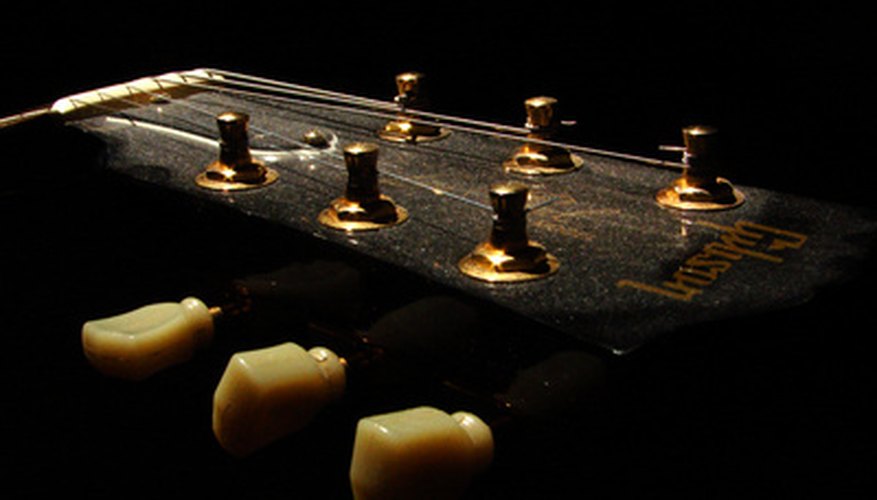The Epiphone ES-335 Dot was the world's first semi-hollowbody electric guitar, introduced in 1958. Today, it's made by Gibson, but it is still prized by jazz and blues musicians looking for a classic sound. Setting up the Dot involves adjusting the truss rod to correct for any underbowing or overbowing of the neck because of humidity changes. The bridge saddle on the Dot may also be adjusted to get the right distance between the string and the fretboard, called the "action."
- The Epiphone ES-335 Dot was the world's first semi-hollowbody electric guitar, introduced in 1958.
- The bridge saddle on the Dot may also be adjusted to get the right distance between the string and the fretboard, called the "action."
Check the action and clearance of the guitar strings by playing it before you begin set-up. There should be 3/64-inch between the fret and the string on the treble side, and 5/64-inch on the bass side. Check that there is no buzzing when you play high up on the neck, and that the strings are not too difficult to push. If you hear buzzing, the neck must be corrected for underbow; if the strings are too far from the frets, the neck must be corrected for overbow.
Remove the truss rod cover at the head of the neck by unscrewing the screws at the top and bottom. Loosen the D and G strings (the strings on either side of the truss rod) and move them out of the way.
- Remove the truss rod cover at the head of the neck by unscrewing the screws at the top and bottom.
- Loosen the D and G strings (the strings on either side of the truss rod) and move them out of the way.
Adjust the truss rod by turning it with a hex wrench. If you heard strings buzzing, turn the truss rod about 1/8th of a turn clockwise to correct the underbow. If the action is too high, turn the truss rod about 1/8th turn counterclockwide to correct the overbow.
Replace and tune the D and G strings and check the action and distance of the strings again. Continue to make adjustments until string buzzing has been corrected and the action is where you want it.
You can make additional adjustment to string height by rotating the wheels on either side of the bridge saddle; this will raise or lower the strings.
TIP
In a pinch, you can check for standard string action using a business card; it should just fit between the fret and the string at the 12th fret. Be prepared to adjust the neck at least a couple of times a year, particularly if you live in an area with large humidity swings between summer and winter. If your action is very low and you're still having difficulty playing bar chords, etc., you may want to switch to lighter gauge guitar strings. Be prepared to readjust the neck after you restring, because lighter strings exert less pressure on the neck, so you may now have an underbow.
WARNING
Gibson carefully adjusts the action and the string height before shipping the Epiphone Dot. Don't make adjustments unless you've got clear problems, particularly with string buzzing. Exercise extreme caution when adjusting the truss rod. Overtightening can damage the neck of your guitar. If you're not sure what you're doing, do not attempt to make these adjustments; have your guitar set up by a qualified professional luthier.
